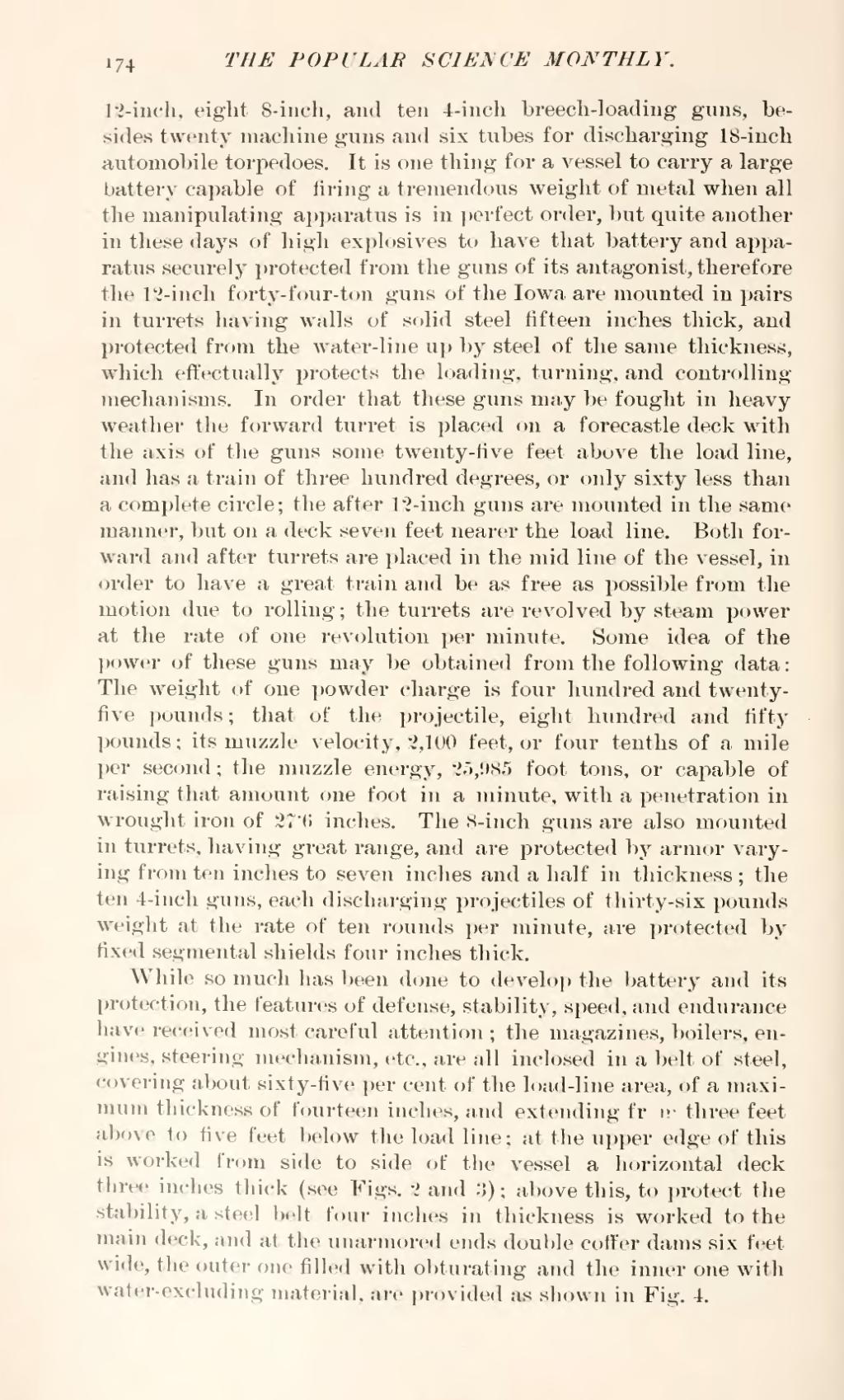12-inch, eight 8-inch, and ten 4-inch breech-loading guns, besides twenty machine guns and six tubes for discharging 18-inch automobile torpedoes. It is one thing for a vessel to carry a large battery capable of firing a tremendous weight of metal when all the manipulating apparatus is in perfect order, but quite another in these days of high explosives to have that battery and apparatus securely protected from the guns of its antagonist, therefore the 13-inch forty-four-ton guns of the Iowa are mounted in pairs in turrets having walls of solid steel fifteen inches thick, and protected from the water-line up by steel of the same thickness, which effectually protects the loading, turning, and controlling mechanisms. In order that these guns may be fought in heavy weather the forward turret is placed on a forecastle deck with the axis of the guns some twenty-five feet above the load line, and has a train of three hundred degrees, or only sixty less than a complete circle; the after 12-inch guns are mounted in the same manner, but on a deck seven feet nearer the load line. Both forward and after turrets are placed in the mid line of the vessel, in order to have a great train and be as free as possible from the motion due to rolling; the turrets are revolved by steam power at the rate of one revolution per minute. Some idea of the power of these guns may be obtained from the following data: The weight of one powder charge is four hundred and twenty-five pounds; that of the projectile, eight hundred and fifty pounds; its muzzle velocity, 2,100 feet, or four tenths of a mile per second; the muzzle energy, 25,085 foot tons, or capable of raising that amount one foot in a minute, with a penetration in wrought iron of 27·6 inches. The 8-inch guns are also mounted in turrets, having great range, and are protected by armor varying from ten inches to seven inches and a half in thickness; the ten 4-inch guns, each discharging projectiles of thirty-six pounds weight at the rate of ten rounds per minute, are protected by fixed segmental shields four inches thick.
While so much has been done to develop the battery and its protection, the features of defense, stability, speed, and endurance have received most careful attention; the magazines, boilers, engines, steering mechanism, etc., are all inclosed in a belt of steel, covering about sixty-five per cent of the load-line area, of a maximum thickness of fourteen inches, and extending from three feet above to five feet below the load line: at the upper edge of this is worked from side to side of the vessel a horizontal deck three inches thick (see Figs. 2 and 3); above this, to protect the stability, a steel belt four inches in thickness is worked to the main deck, and at the unarmored ends double coffer dams six feet wide, the outer one filled with obturating and the inner one with water-excluding material, are provided as shown in Fig. 4.

